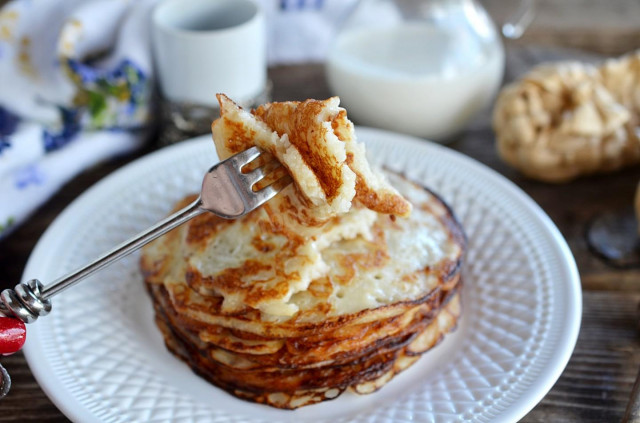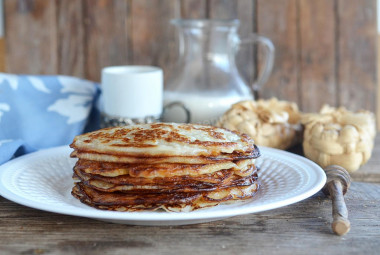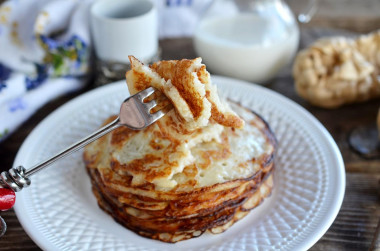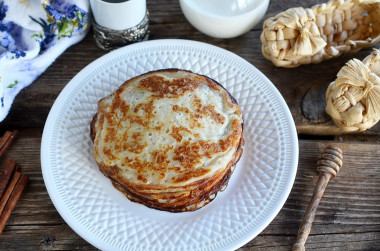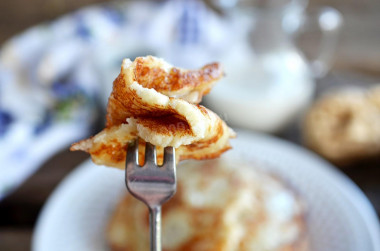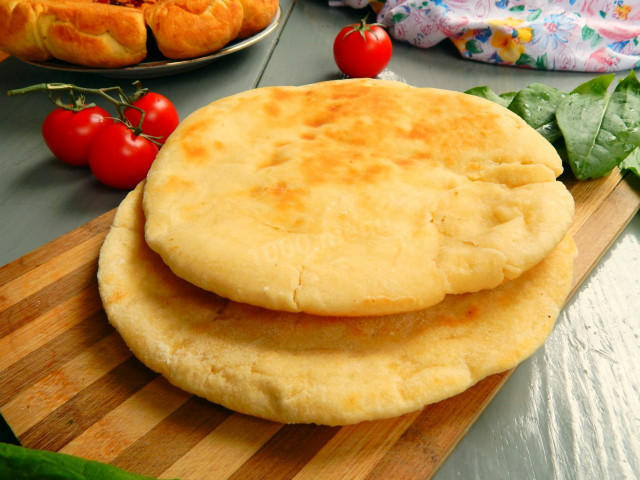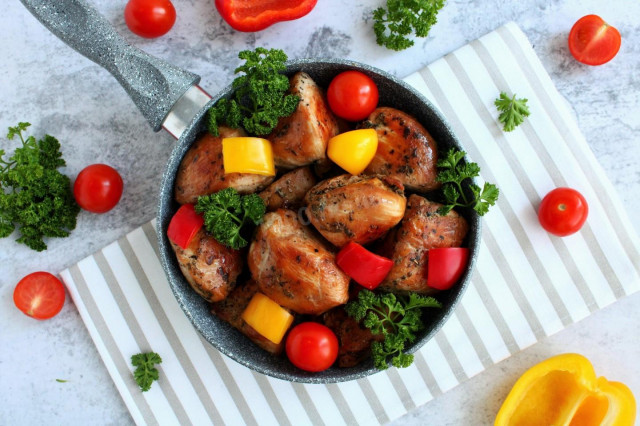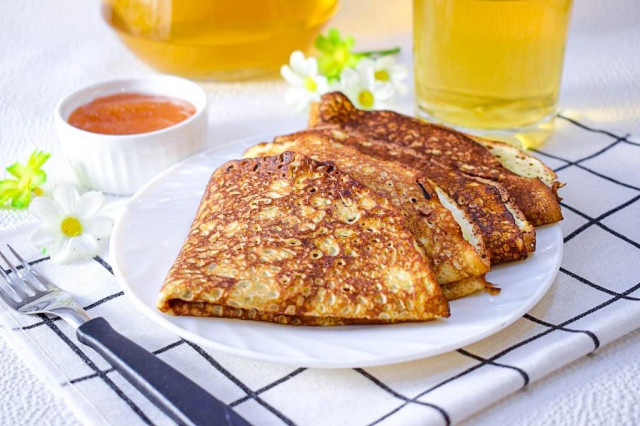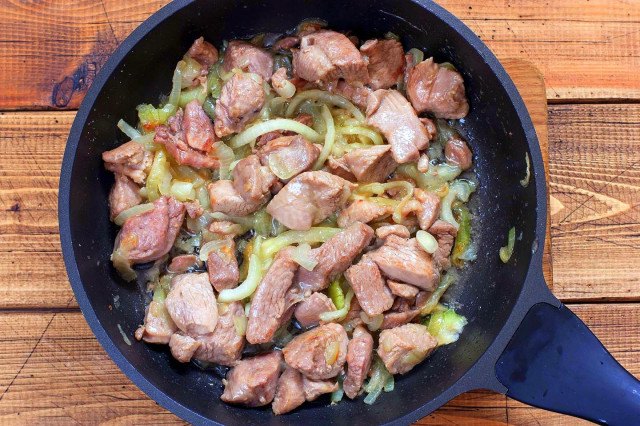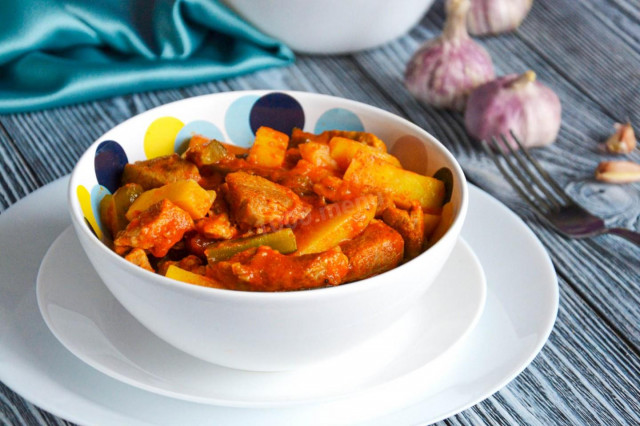Composition / ingredients
Step-by-step cooking
Step 1:
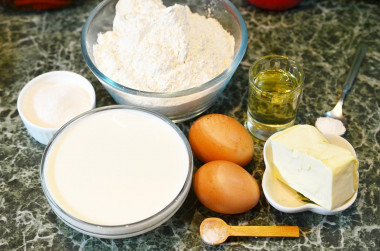
Prepare all the necessary products. Milk is suitable for any percentage of fat content, but of course, pancakes will be tastier from more fatty milk. I recommend using flour not of the highest, but of the first or even second grade. Such flour, as a rule, is not snow-white in color, because it is not bleached with chlorine in factory conditions. Eggs are certainly better large, homemade, at least WITH.
Step 2:
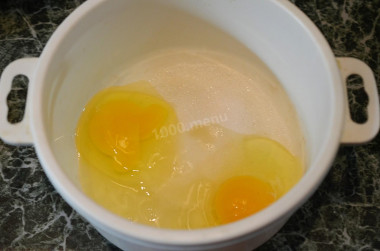
In a bowl for kneading dough for pancakes, beat the eggs.
Step 3:
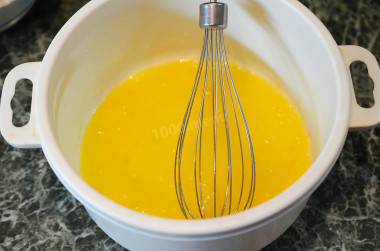
Beat eggs together with sugar until smooth. You can use both a mixer with a whisk attachment, and beat with a whisk by hand. If desired, especially if you cook for children, you can add some flavors. A pinch of vanilla or cinnamon, or a spoonful of vanilla sugar will be very appropriate here.
Step 4:
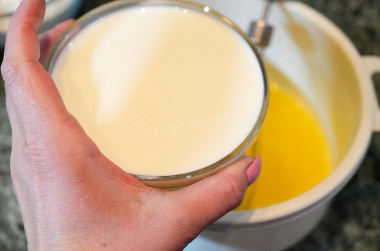
Pour milk into the egg mixture. I want to note that milk, like eggs, should be the same room temperature, so get these products from the store in advance. It is also quite possible to replace cow's milk with a vegetable analogue.
Step 5:
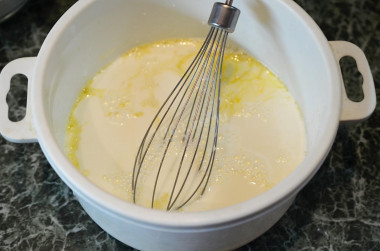
Mix with a whisk until smooth.
Step 6:
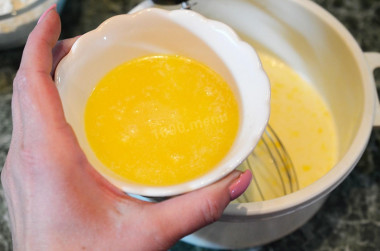
Melt the butter and in small portions, stirring so that the egg white does not curdle, pour into the egg-milk mixture.
Step 7:
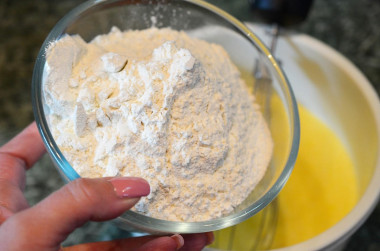
Add flour, baking powder and salt. In any case, do not pour all the flour at once. Any flour differs from other types by its amount of gluten, so focus on the required dough density. In addition, the process of sifting flour is always important for baking.
Step 8:
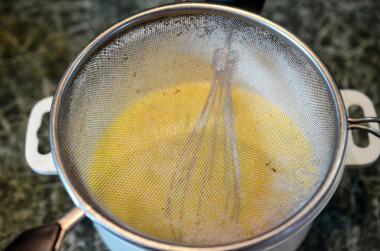
During sifting, the flour is saturated with oxygen and the finished dish will turn out to be more airy. Therefore, be sure to use a sieve and sift the flour.
Step 9:
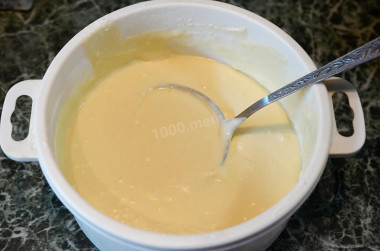
Mix everything so that there are no lumps. The consistency of the dough is thick enough, like fatty sour cream.
Step 10:
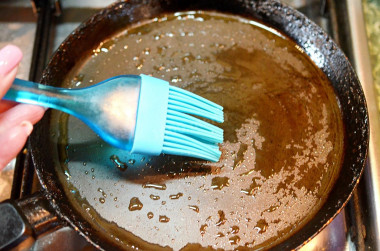
I recommend a cast-iron or ceramic frying pan for frying pancakes. Using a brush or half an onion, grease the pan with a small amount of vegetable oil. Heat the pan well.
Step 11:
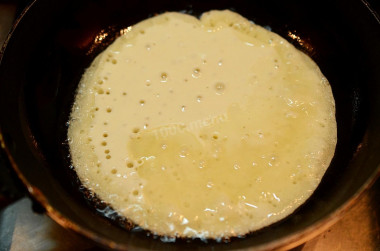
Pour out a little dough and spread it all over the pan in a large circle. Fry the pancakes for 1-2 minutes on each side.
Step 12:
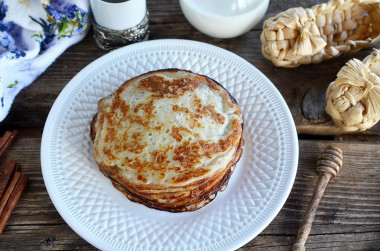
If desired, each pancake can be greased with butter. Serve with jam, honey and sour cream. Bon appetit!
Be prepared for the fact that you may need more or less flour than indicated in the recipe. Focus not on the amount of flour, but on the desired consistency of the dough. Read a lot of useful information about flour and its properties; in this article!
The caloric content of the products possible in the composition of the dish
- Whole cow's milk - 68 kcal/100g
- Milk 3.5% fat content - 64 kcal/100g
- Milk 3.2% fat content - 60 kcal/100g
- Milk 1.5% fat content - 47 kcal/100g
- Concentrated milk 7.5% fat content - 140 kcal/100g
- Milk 2.5% fat content - 54 kcal/100g
- Chicken egg - 157 kcal/100g
- Egg white - 45 kcal/100g
- Egg powder - 542 kcal/100g
- Egg yolk - 352 kcal/100g
- Ostrich egg - 118 kcal/100g
- Whole durum wheat flour fortified - 333 kcal/100g
- Whole durum wheat flour, universal - 364 kcal/100g
- Flour krupchatka - 348 kcal/100g
- Flour - 325 kcal/100g
- Granulated sugar - 398 kcal/100g
- Sugar - 398 kcal/100g
- Butter 82% - 734 kcal/100g
- Amateur unsalted butter - 709 kcal/100g
- Unsalted peasant butter - 661 kcal/100g
- Peasant salted butter - 652 kcal/100g
- Melted butter - 869 kcal/100g
- Vegetable oil - 873 kcal/100g
- Salt - 0 kcal/100g
- Baking powder - 79 kcal/100g

